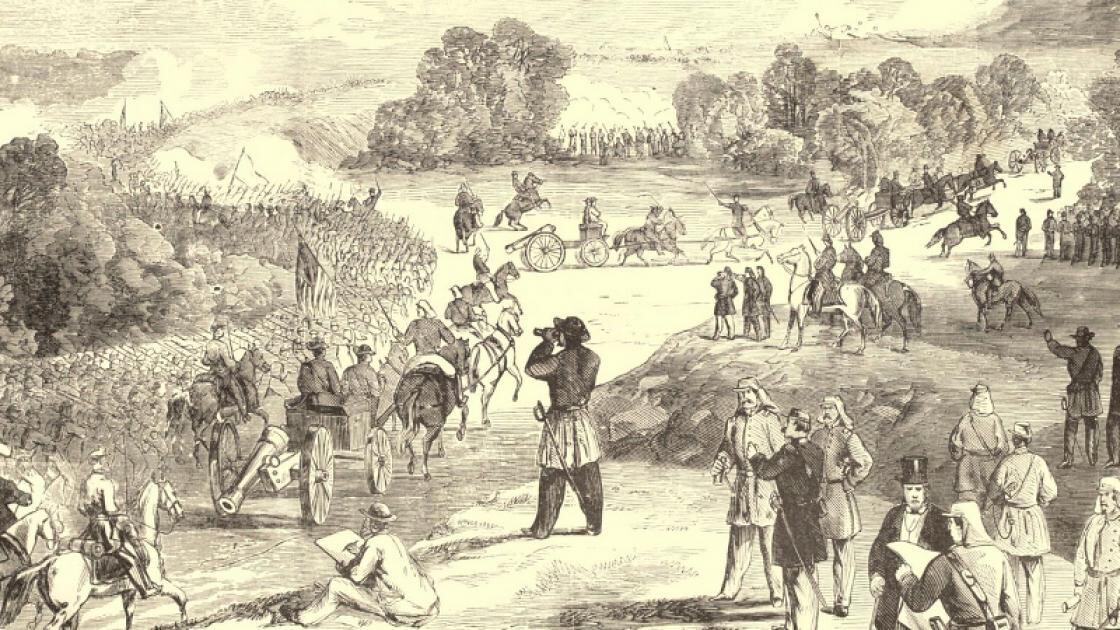The First Major Engagement of the Civil War
On a significant day in 1861, a pivotal moment in American history unfolded as Union and Confederate forces engaged in battle outside of Manassas, Virginia. This confrontation marked the first major clash of the Civil War, setting the stage for the long and brutal conflict that would follow.
The battle began when Union General Irvin McDowell planned to move his troops across a small stream known as Bull Run, located just outside of Manassas. This location was strategically important and heavily defended by Confederate forces. McDowell’s objective was to push forward and gain an advantage over the Confederates, but he quickly encountered strong resistance.
As the situation on the battlefield developed, Confederate General P.G.T. Beauregard became aware of the Union’s movements. Recognizing the threat posed by McDowell’s forces, Beauregard took decisive action by sending additional reinforcements to bolster the defenses along Bull Run. This move proved crucial in shifting the balance of power during the engagement.
Throughout the course of the day, the Union troops found themselves facing increasing challenges. As the fighting continued, the strength of the Union forces was gradually weakened by the arrival of fresh Confederate troops. These reinforcements allowed the Confederates to maintain their position and eventually gain the upper hand in the battle.
The outcome of the engagement was a retreat by the Union forces. This defeat was a significant setback for the North, as it highlighted the challenges they would face in the early stages of the war. The loss at Bull Run also served as a wake-up call, prompting the Union to reassess its strategies and preparations for future conflicts.
It would be more than a year before the Union made another attempt to cross Bull Run. During this time, both sides had the opportunity to regroup, reorganize, and refine their tactics. The lessons learned from the initial battle would play a critical role in shaping the strategies of both the Union and the Confederacy in subsequent engagements.
The Battle of Bull Run, also known as the First Battle of Manassas, was a defining moment in the Civil War. It demonstrated the intensity of the conflict and the determination of both sides to achieve their objectives. The battle also underscored the importance of leadership, strategy, and preparation in military engagements.
In the years that followed, the Civil War would see numerous battles and turning points, each contributing to the eventual outcome of the conflict. The initial clash at Bull Run was a reminder of the high stakes involved and the sacrifices that would be made by soldiers on both sides.
This historical event serves as a powerful example of how a single battle can have far-reaching consequences. It highlights the complexities of war and the impact it has on the course of history. Understanding the events of the Civil War is essential for appreciating the struggles and triumphs of the past.
As the nation continues to reflect on its history, the significance of the First Battle of Manassas remains an important chapter in the story of the United States. It stands as a testament to the resilience and determination of those who fought for their beliefs and the future of their country.







